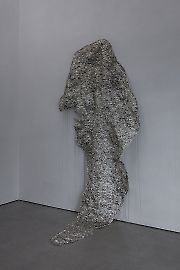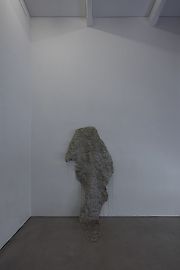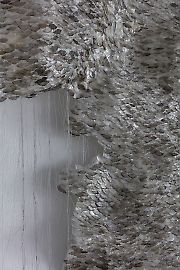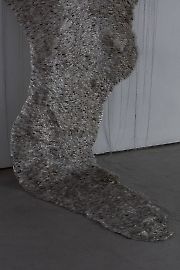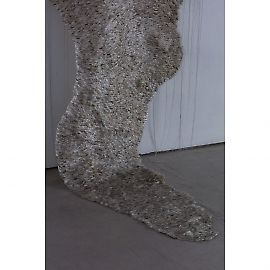Olivia Coeln -- Funferal
Olivia Coeln, Wise Keys, 2020, courtesy Georg Kargl Fine Arts, © Georg Kargl Fine Arts, Foto kunst-dokumentation.com
Funferal, Ausstellungsansicht, 2020, courtesy Georg Kargl Fine Arts, © Georg Kargl Fine Arts, Foto kunst-dokumentation.com
Olivia Coeln, Wise Keys, 2020, courtesy Georg Kargl Fine Arts, © Georg Kargl Fine Arts, Foto kunst-dokumentation.com
Olivia Coeln, G.S., 2020, courtesy Georg Kargl Fine Arts, © Georg Kargl Fine Arts, Foto kunst-dokumentation.com
Olivia Coeln, G.S., 2020, courtesy Georg Kargl Fine Arts, © Georg Kargl Fine Arts, Foto kunst-dokumentation.com
Olivia Coeln, G.S. (Detail), 2020, courtesy Georg Kargl Fine Arts, © Georg Kargl Fine Arts, Foto kunst-dokumentation.com
Olivia Coeln, G.S. (Detail), 2020, courtesy Georg Kargl Fine Arts, © Georg Kargl Fine Arts, Foto kunst-dokumentation.com
Olivia Coeln, Wise Keys, 2020, courtesy Georg Kargl Fine Arts, © Georg Kargl Fine Arts, Foto kunst-dokumentation.com
Funferal, Ausstellungsansicht, 2020, courtesy Georg Kargl Fine Arts, © Georg Kargl Fine Arts, Foto kunst-dokumentation.com
Funferal, Ausstellungsansicht, 2020, courtesy Georg Kargl Fine Arts, © Georg Kargl Fine Arts, Foto kunst-dokumentation.com
‘Funferal’ is a compound that appears in James Joyce’s final modernist tome Finnegans Wake, published in 1939. Structured cyclically, Finnegans Wake allegorises History as repetitious fates of birth and death. It invokes recurring shapes of time and it traces the historical institutions of family and military. Written in a cadence which is almost unreadable, its words swerve across one’s breath, sticking to the throat. ‘Funferal’, derived from ‘fun’ and ‘feral’, transmogrifies into debaucherous fun for all, which turns back towards the funeral, or funereal, the wake of the dead, and its companion, loss.
The novel’s protagonist originates in an Irish folk song of the same name, which narrates the life of Tim Finnegan, an impoverished construction worker who likes to drink. One day he drinks too much and tips off a ladder, breaking his skull. On the eve of his wake, those who mourn him gather. A fight breaks out and a bottle of whiskey is thrown across the room. It misses its target but lands near Finnegan’s corpse, splashing all over it. The intoxicating smells lead to this man’s awakening. He ‘rises’ from the bed as if resurrected.
By way of the grammar of the title of Coeln’s exhibition, the character Finn leads us on a semantic voyage to ‘fin’ as in ‘end’, termination, negation of life, death and the wake that follows. From this negative connotation, we can cut to the German ‘Flosse’: the fin that G.S. lacks gesturing to disorientation, being adrift without bearings. ‘Flosse’ also resonates with ‘Fluss’ the river, derived from ‘fliessen’, to flow. As a river throws a strand of time onto its coursing path, it streams, surges and rages. It is said that a river is the same at the beginning and at the end, except at some point it will drift into the sea. A poem by Bertolt Brecht suggests that riverbanks act as policing constraints, hemming in its flow. Here, G.S. is anchored, suspended, draped. It could clothe us. It reminds us of the physicality of our bodies, our breath.
In the novel Finnegans Wake, the character Anna Livia Plurabelle personifies the river Liffey, giving it life. Joyce brought together the living river and her spirits with the whiskey (and its spirits). Whiskey, in its original Irish Gaelic meant ‘water of life’. Embedded in an animistic belief system, the river is said to have a soul. In the context of Funferal animism runs through everything; everything is endowed with life. In its space, we symbolically share a meal with the ghosts of its gifts, the Wise Keys.
How are dead things personified and how are they resurrected? If it could speak, what would the fish-ghost say? While the wake of a ship is the effect it leaves on the surface of the water that flows after it, the pattern in G.S. recurs and shifts into the bulges that are woven into its surface. At the threshold of life and death, its anthropomorphising effect throws into relief an ongoing struggle to find a perspective outside of the ‘human’ — where the human has been and remains the perspective that delineates and hierarchizes between itself and those who it makes abject. In that which is cast off, stripped from the fish on its way to market, we find the articulation of abject material. The repetitious, monotonous stitching back together of a fish from numerous fish who have been sacrificed to ‘human’ logics of capitalist value creation produced through labour, extraction from, and domination over nature re-endows the fish-ghost with power beyond its reduction, while acknowledging that domination also resides in spiritual rituals.
– Rose-Anne Gush





